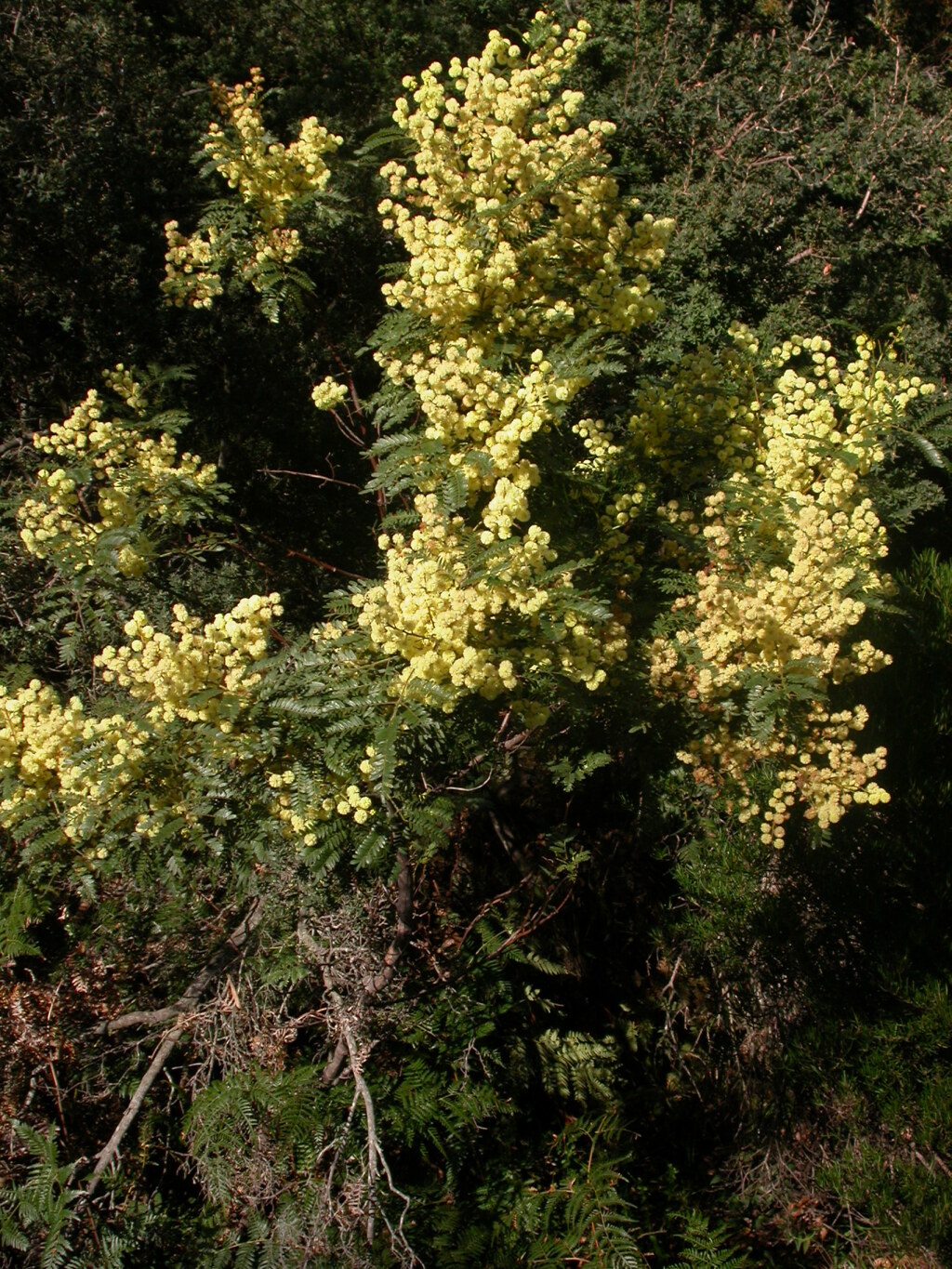Acacia terminalis
(Salisb.) J.F.Macbr. Sunshine WattleShrub (rarely small tree), 1–6 m tall, glabrous or with scattered, short hairs, particularly on inflorescence; bark smooth, grey; branchlets ridged, usually reddish. Leaves bipinnate, dark shiny green above, much paler below; petiole with a reddish elongate gland; rachis 4–8 cm long, with small glands sometimes present at junction of upper pairs of pinnae; pinnae in 2–6 pairs; pinnules in c. 10–15 pairs, well-separated, linear to linear-lanceolate, 8–14 mm long, 2–4 mm wide, shorter towards proximal end of pinnae, midrib prominent, apex obtuse to acute, mucronate. Inflorescence a raceme or panicle; heads globular, 6–15-flowered, pale to golden-yellow, peduncles 4–12 mm long. Pod more or less flat, straight or slightly curved, 3–10 cm long, 9–13 mm wide, irregularly constricted, red-brown to blackish-brown, margins thickened, surface above each seed with a pair of eruptions. Flowers Mar.–Jul.
VVP, GipP, OtP, CVU, EGL, EGU, HSF, HNF, Strz, MonT, HFE, VAlp. Also NSW, Tas. Common in dry forests east of Melbourne with an outlying population near Aireys Inlet. Often growing at the edge of disturbed areas such as quarries or roads.
There is some variation in flower colour and stature of plants within Victoria.
Entwisle, T.J.; Maslin, B.R.; Cowan, R.S.; Court, A.B. (1996). Mimosaceae. In: Walsh, N.G.; Entwisle, T.J., Flora of Victoria Vol. 3, Dicotyledons Winteraceae to Myrtaceae, pp. 585–658. Inkata Press, Melbourne.
 Spinning
Spinning

